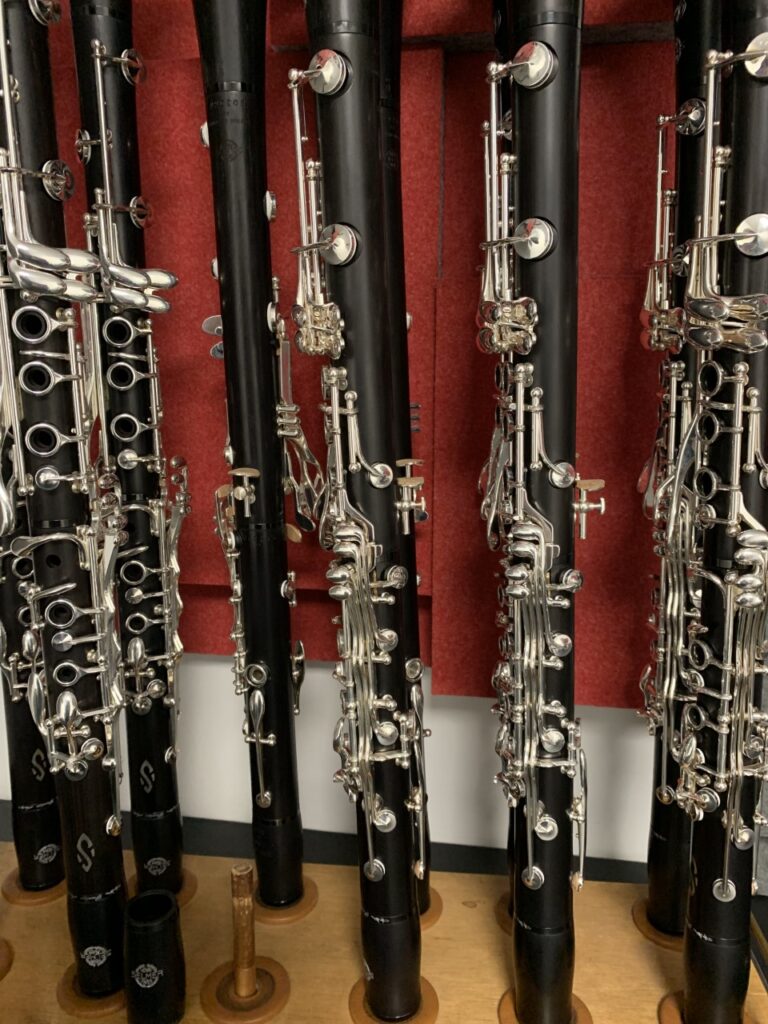The life span of a clarinet (and its accessories)
You know what they say – nothing lasts forever, and the clarinet is no different.
One of the most common questions I’m asked is “How long does a reed/mouthpiece/ligature/clarinet last?”
There are a few different factors affecting this answer, so let’s break it down by item:
- Reeds. As a clarinetist, you’ll go through more reeds than any other piece of equipment. How long each reed last depends on several things, such as how you store your reeds, if you rotate them (spoiler alert: you should be!), how much you play them, and even the pH balance of your saliva. (Yes, really! Some saliva breaks down reeds faster than others.) A very generalized life span for a reed is anywhere from one week to a month. Keep in mind that this will vary greatly from player to player, depending on how much they practice and perform. Here are some tips to help you increase the life span of your reeds.
- Mouthpieces. Again, there are several factors affecting life span when it comes to mouthpieces, such as how much they are played. Although mouthpieces can be played indefinitely if well cared for, I encourage students to replace mouthpieces as soon as they notice signs (or sounds) of wear. This can be anywhere from 5-10 years.
- Ligatures. Ligatures can last indefinitely, depending on the material. Some fabric ligs might stretch out over time and therefore produce a different sound, but other ligs (such as those made of metal) can last indefinitely as long as they aren’t broken or the threads do not become stripped.
- Barrels. Barrels are a great way to spice up your sound (and help improve tuning, in certain circumstances). Over time, you might notice a lower quality sound due to normal wear and tear on your barrel (aka playing it regularly), so you can always test other barrels to see if newer ones produce a higher quality sound. Keep in mind that moisture also wears on a barrel, so dry well after playing. The average life span for a barrel is 10+ years.
Now, let’s talk about clarinets:
- B-flat clarinets. Depending on how much you play them, B-flat clarinets can last indefinitely. However, I’ve found that the life span for most professional players’ clarinets is about 5-10 years, which is when they start to demonstrate signs (and sounds) of wear due to playing.
- A clarinets. Why did I separate B-flat and A clarinets? Even among professionals, the A clarinet is not used to the same extent as the B-flat clarinet, meaning its life span is usually longer. For professionals, I estimate the life span of an A clarinet to be around 15+ years.
- Auxiliary clarinets. Unless you are a professional clarinetist who primarily performs on an auxiliary clarinet, most auxiliary clarinets have an indefinite life span, assuming they are well-maintained.
How do you know if your clarinet or accessories are wearing out?
As you probably gleaned from reading this article, there is no set timeline for replacing your clarinets or its accessories. It depends on several factors and is unique to each musician. Ultimately, clarinets and accessories get blown out, and these are apparent in the following scenarios. If you notice any of the below occurring, it is probably time to try new equipment to see if it helps improve these:
- Your sound feels lackluster or dull (compared to your normal sound).
- You struggle to achieve the same sound quality.
- New or different tuning issues present themselves (and it’s not due to environmental factors such as temperature or humidity).
- You feel like you’re fighting your equipment.
So, what’s next?
If you’ve determined that it’s time for some new equipment, check out my articles for your next steps!
- How to select a clarinet reed
- How to choose a new clarinet mouthpiece
- Pro tips to select a new clarinet
P.S. Now is also a good time to remind you to replace your swab! If you can’t remember the last time you washed or replaced your swab, it’s time for a new one.

2 Comments
Alan
I love getting your newsletters on a Sunday. Bit shocked about the suggestion that reeds lasta week to a month. I do rotate mine one in eight but only discard one when it becomes dysfunctional . I might have a reed for 6 months to a year and try to practice every day!!!!
jennyclarinet
Thanks so much! A reed’s life span can depend on several different things, so as long as it feels and sounds good, you can play on them! (Just be sure to sanitize!)